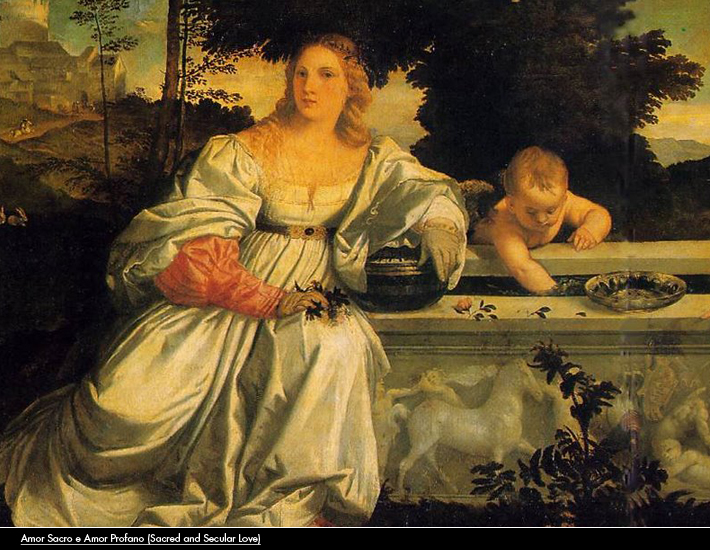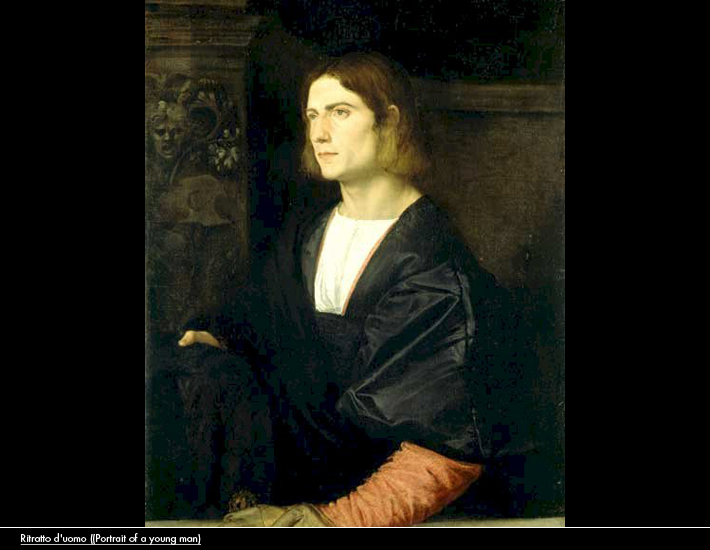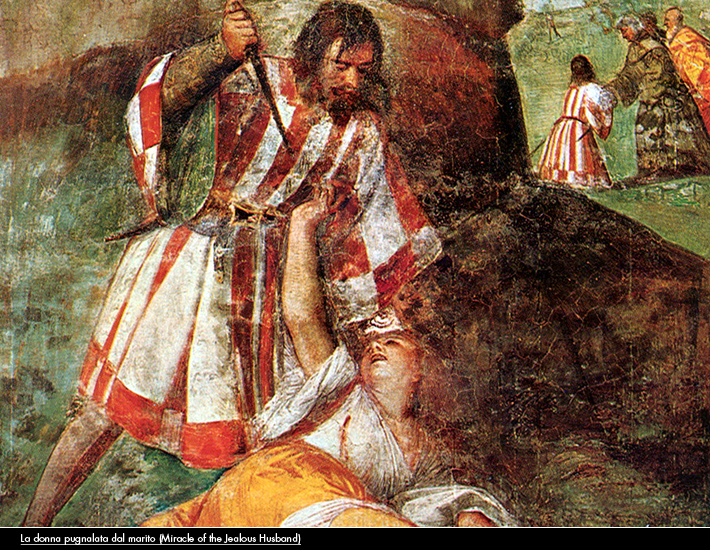
Tiziano Vecellio (Titian) based his painting style on the use of colour which he learnt from Giorgione (another master Venetian painter of that era) although, in the case of Titian, we can't really speak about learning - he displayed from a very young age his talent – but mostly about a mutual exchange of creativity. While still a child of 10 years-of-age, Titian left his birthplace to go to Venice, the centre of seafaring commerce and opulence but also of cultural life. He worked in Gentile Bellini's workshop, official painter of the Serenissima Repubblica di Venezia.
Later Tiziano fled Venice because of the plague and went to Padova, where in 1511, he received his first important commission, the three frescos for the Scuola del Santo representing Sant'Antonio's Miracles. At only 20 years old he painted Il Miracolo del Neonato (the Miracle of the Speaking Babe), Il Miracolo del Piede Risanato (The Miracle of the re-attached foot), and Il Miracolo del marito geloso (the Miracle of the Jealous Husband).From then on, Titian was recognised as one of the best, if not the best, painters in Venice.
It's between 1531 and 1548 that Titian became a "superstar", so much so that he was asked to interpret the image of the Emperor of the Holy Roman Empire, Charles V, in an official portrait that succeeded in representing his power and his strength, Ritratto di Carlo V a cavallo (Emperor Charles V on horseback), but his close relationship with Charles V allowed him to portray him also within familiar settings.The Pietà, painted in 1576, has been described as his last painting, imagined for his tomb in Venice, in the Frari Chapel. The structure is the classical triangular one, with dark colours and a deathly atmosphere. Plague killed Titian on August 27th 1576.










No comments:
Post a Comment